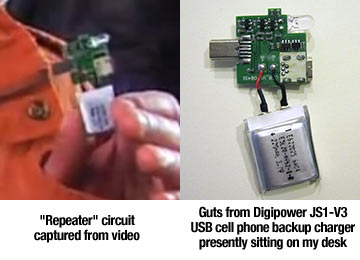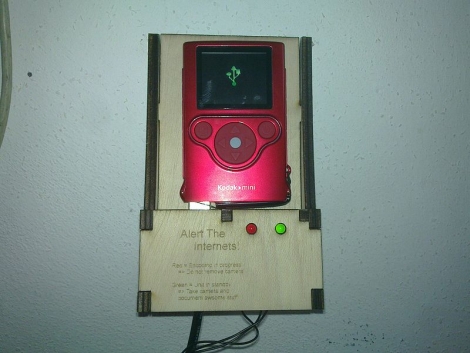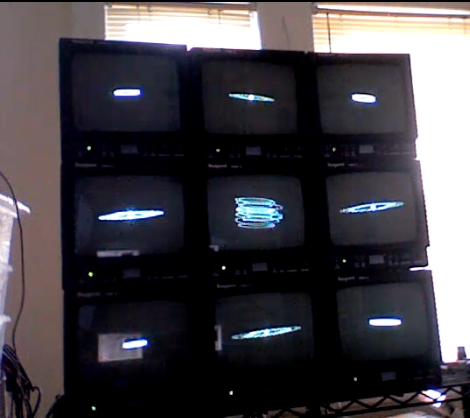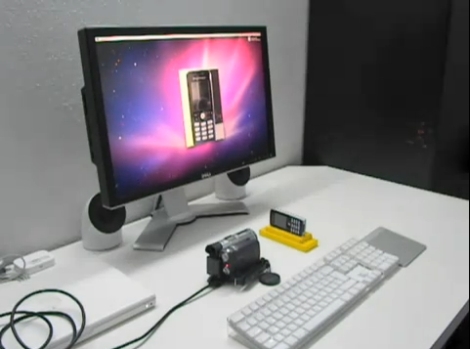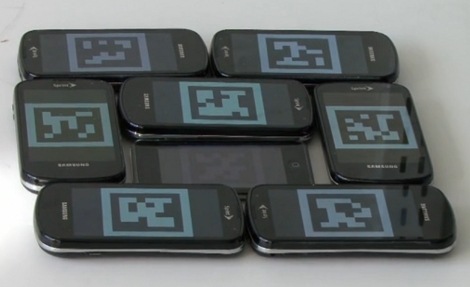
Idle developers of the world take inspiration from this project and unite to create your own version. It’s called the Junkyard Jumbotron because it takes many different displays and allows them to be used as one big interactive display. The image above shows a collection of smartphones displaying a test pattern. The pattern is unique for each device and is used to calibrate the display. Using a digital camera, a picture of these test patterns is snapped, then sent to the server. The server calculates the position of each of the screens, then sends the correct slice of a large image back to each phone.
It’s funny that they use the word Junkyard in the name of the software. Each display needs to be able to run a web browser so you can’t just use junk displays. But one nice side effect of the hardware requirements is that you can still do things like panning and zooming as seen in the video after the break. Here’s the real question: can you make this work as an open source project? How about something that can be easily set up to work with a LAMP server?
Continue reading “Junkyard Jumbotron Is Begging To For An Open Source Project Clone”




